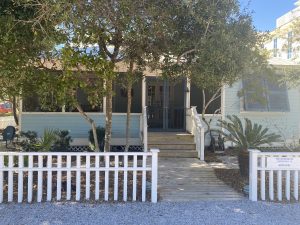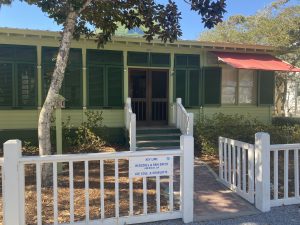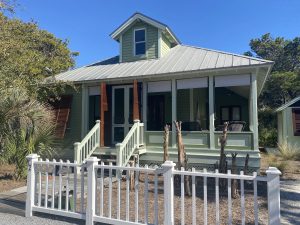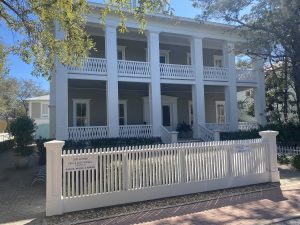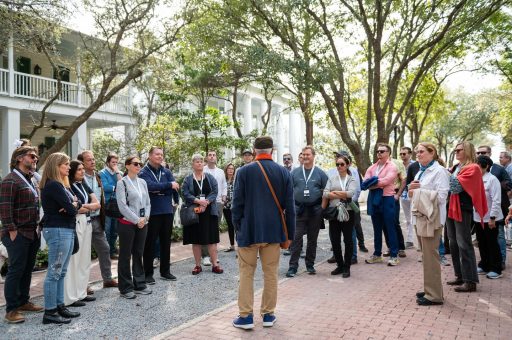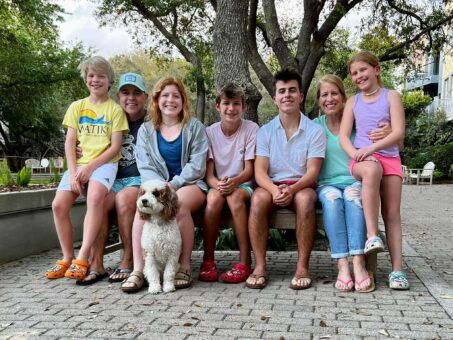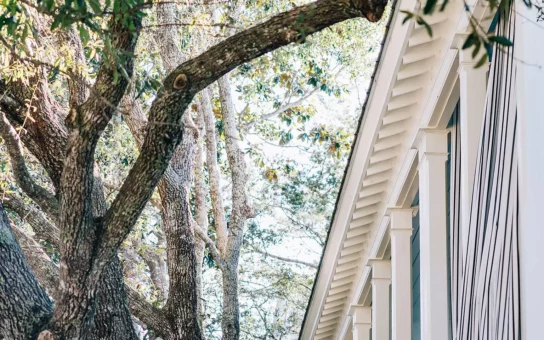Seaside, Florida Pioneer Reflects on the Beginning of the Town
In the mid-1980s, when Seaside was just taking shape, Southern Living Magazine, Architectural Digest, Time and dozens of other publications were featuring the emergence of this New Urbanist beachfront town. A town that would have wood-frame cottages with picket fences, a post office, a chapel, a school, a town center and pedestrian-friendly streets. A town where everyday needs would be within a 10-minute walk. The buzz caught the eye of Suellen Hudson.
“I had read in the June 1984 issue of Southern Living Magazine the most delightful article about Seaside and thought, this looks charming,” Suellen recalls, convincing her husband Hal to take the road trip from Pensacola to see what the hype was about. “I walked into the sales office, and there was this wood-burning stove, vaulted ceiling, tile bathroom, wood floors and I was like, ‘Yes!’ because it wasn’t a typical spec house look.”
The Hudsons met town founder Robert Davis, who spent a couple of hours sharing his vision of the town, of unpretentious cottages with deep roof overhangs, vertical and square windows with operable shutters, cross ventilation and inviting porches. “He talked of indigenous architecture, dogtrot houses, the way Southerners lived in their little beach cottages and I got into all that romance,” Suellen says. “There was something about this community that just pulled me immediately.”
While Hal was reluctant about buying a lot at first, he relented. Suellen, who had no building experience, took charge of building an 800-square-foot cottage on Savannah Street. “Robert suggested his student architect intern named Carey McWhorter,” she explains. “I hired him, got a framing crew and built the house by February.” McWhorter, who died in 2019, would become an award-winning architect whose inspired work is enjoyed in Seaside and other beach towns in this area today.
Suellen wanted to share her new beach cottage with friends. She had an open house, which Robert attended. He remarked to Suellen, “You have captured my vision. Can you do it again?”
So she did it again. With a variation on the theme of the Savannah Street cottage, she and Robert would sketch drawings. She hired a draftsman and got to work, commuting every week from Pensacola to oversee the building progress. “It wasn’t hard to do,” says Suellen, who had served as a Naval officer. “It’s like managing in the Navy. I managed the subcontractors, made decisions, and got it done. I loved zooming out here every week with my daughter.”
And when that cottage was completed, she did it again. And again. Ultimately, she built seven homes in town, the grand finale being her Greek Revival home on Seaside Avenue. “I thought I could do it myself but Robert convinced me that this house ‘on the avenue’ needed an architect,” she says, and hired Don Cooper. “I fell in love with his work.”
Being a part of building the town of Seaside widened Suellen’s world. She was also a member of the Seaside Institute. She lent her garage apartment to resident artists for Escape to Create each year. “I was longing for this, and I don’t know why,” she adds. “I’ve met people from all over. Friends that I would not have met. I’ve been exposed to a lot of artists that I otherwise wouldn’t have known. I cherish the letters sent to me from those artists, letters of thanks, poems. And especially the friendships I’ve made here.”


